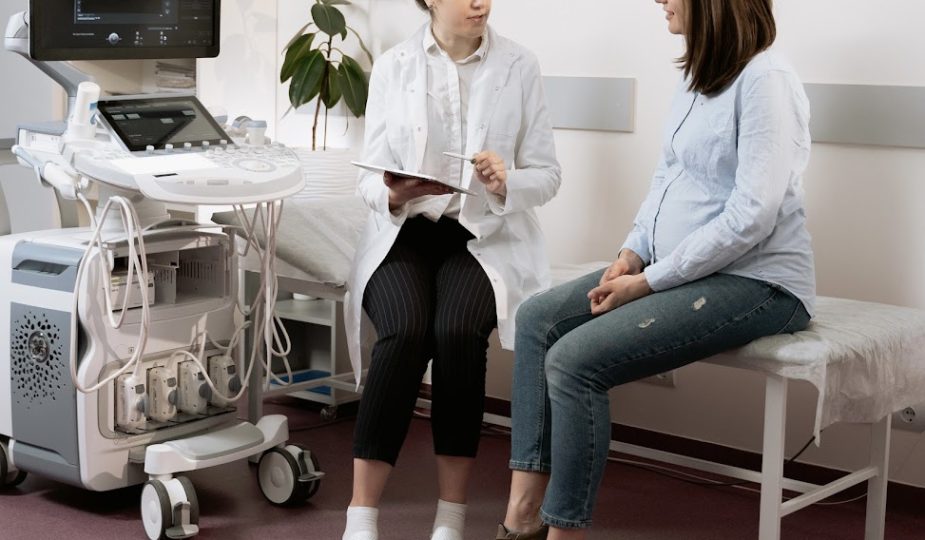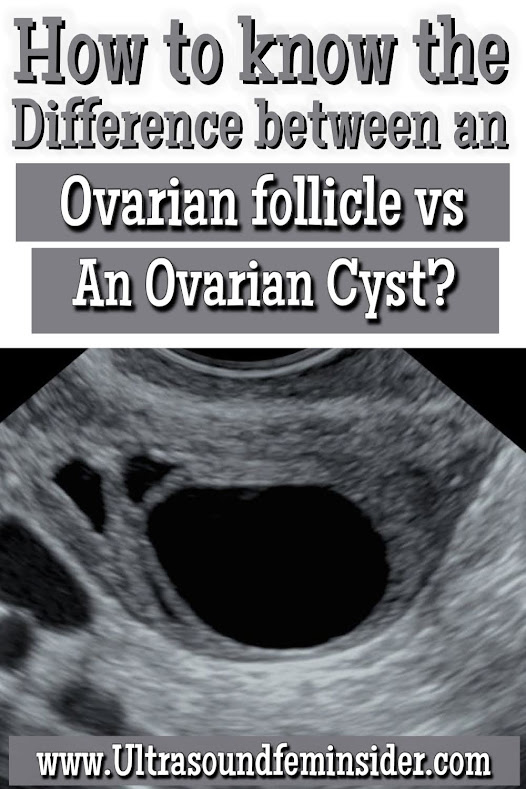One of the organs that plays a fundamental role in procreation is the ovaries. The ovaries are small, almond-shaped organs that lie on each side of the uterus, held in place by a ligament. The ovaries normally measure 3 centimeters and are influenced by the woman’s hormonal cycle. In the ovaries is where the eggs are formed and matured, and they are released once a month during the childbearing years. Eggs are responsible for starting a new life when they are fertilized. Now, the follicles go through a great process of transformation in the ovaries during the menstrual cycle and sometimes they become ovarian cysts. But how to know the difference between an Ovarian Follicle vs Cyst? How to Tell if is an Ovarian Cyst for sure? Well, in this article I am going to break it down for you. Ultrasound images are included in the article as well. Ready? Let’s begin.
What exactly are Ovarian Follicles?
Ovarian follicles are tiny sacs in your ovaries that are filled with fluid, most of them contain an egg that has not yet been fertilized. You are born with a certain number of eggs, which can range anywhere from one million to two million, but the total amount gradually decreases as you get older. By the time you enter puberty, about 25 percent of these follicles remain, around 300,000. At menopause, fewer than 1,000 ovarian follicles are typically left.
Your follicles, on their own, progress through a number of different stages of development. In the beginning, the ovaries of a fetus will develop what are known as primordial follicles. They continue to be in this state until adolescence, when they begin to develop and transform into primary follicles. This stage lasts until menopause. Some of these follicles start to swell right around the time that ovulation occurs in the body. One will become predominate, while the others will stop growing and eventually disappear.
The dominant follicle will eventually burst open, which will result in the release of an egg from your ovary. This egg will then travel down your fallopian tube and into your uterus. This egg will remain exposed for around twenty-four hours, providing a window of opportunity for fertilization to take place. This pattern will repeat itself each month until you reach menopause and end your reproductive years.
Having follicles in the ovaries every month is completely normal and part of the normal ovulation process for women. To learn more about the ovulation process including symptoms you should know about, click on the following link. How to track ovulation to get pregnant fast.
Sharing is caring.
What Exactly is an Ovarian Cyst?
A pocket or sack filled with fluid may occasionally develop inside the ovary or on its surface. The term for this is an ovarian cyst. Actually, many women will occasionally have ovarian cysts. The majority of the time, ovarian cysts are relatively harmless and won’t hurt you. Most will go away in a few of months without any kind of treatment. Some ovarian cysts, particularly those that rupture, might have dangerous adverse effects and symptoms. It’s critical to understand the ovarian cyst symptoms that could indicate a potentially dangerous issue.
During reproductive age in women all simple cysts within the ovary that measure less than 3 centimeters are considered to be normal, which is known as follicular cyst, or functional cysts. Ovarian cysts can have different origins and have different appearances during an ultrasound, so it is important that if you are having any symptoms, you visit a doctor to rule out or confirm the presence of an ovarian cyst. Here are two clear examples of a follicular ovarian cyst and a simple ovarian cyst.
Ultrasound images of Ovarian Follicle vs Ovarian Cysts.
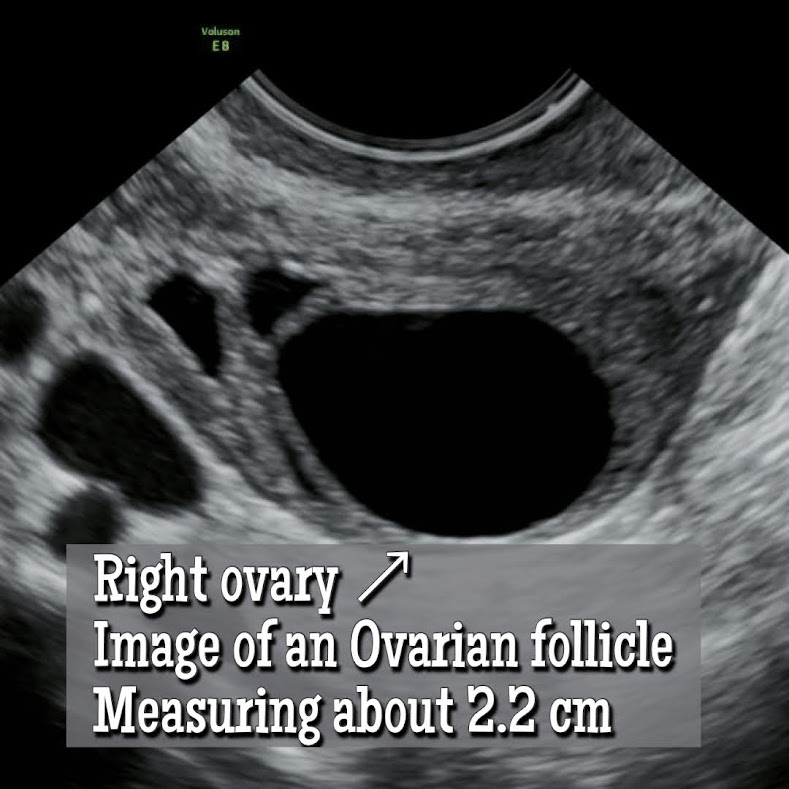
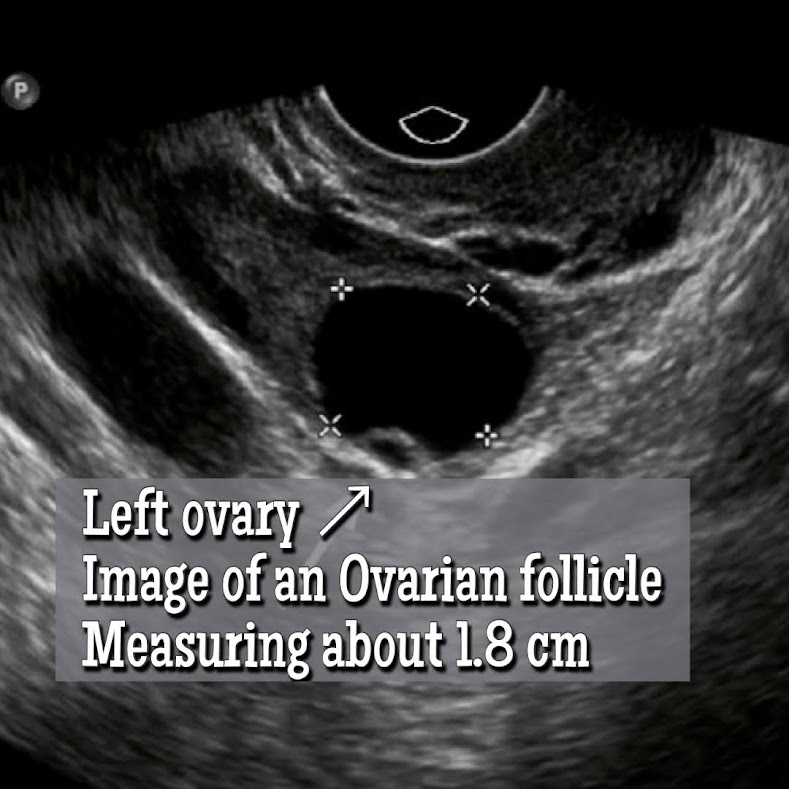
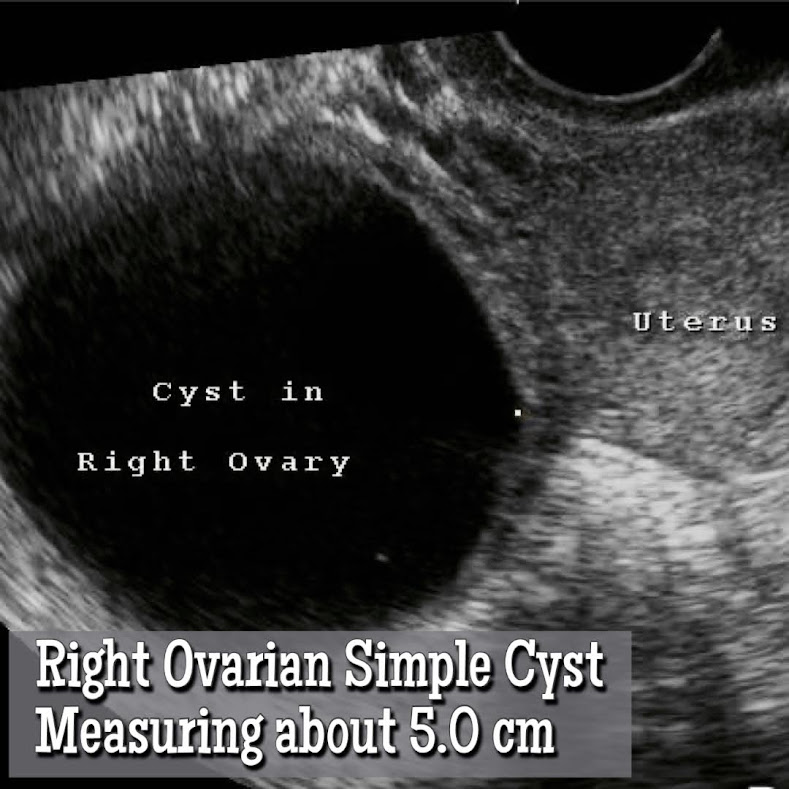
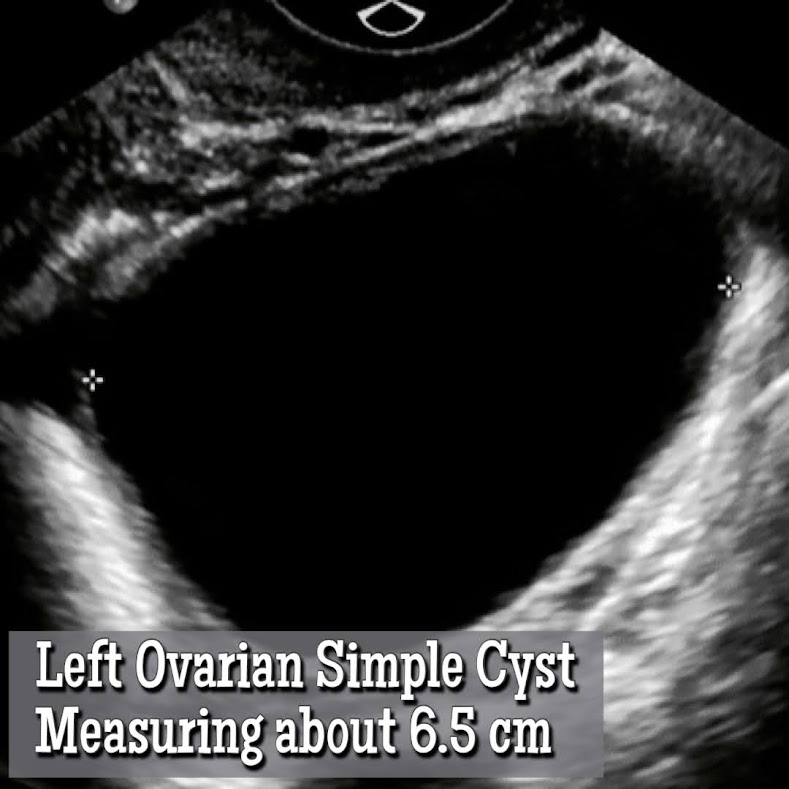
Ovarian Follicle vs an Ovarian Cyst? How to Tell the Difference.
The difference between an Ovarian Follicle vs an Ovarian Cyst is usually found by the difference in symptoms between these two. An ovarian follicle is a normal structure of the ovary in all women, and even when it can cause symptoms, these symptoms are usually moderate and transient. However, when a cyst begins to develop in the ovary, and it begins to grow, it begins to give other symptoms that are more severe and long-lasting. You should know that the larger the cyst, the greater the symptoms and possible complications. Ovarian torsion and the rupture of the cyst being the most serious consequences of a large ovarian cyst. In addition, when the ovarian cyst reaches a large size, it begins to exert pressure on the surrounding organs such as the urinary bladder and the intestines. So, here I summarize the 8 Ovarian Cyst Warning Symptoms that you Shouldn’t Ignore.
Most Common Ovarian Cyst Symptoms.
Bloating
Abdomen is one of the warning indicators that you can have ovarian symptoms. Numerous stomach problems could arise if you have ovarian cysts. One of these signs is belly enlargement, bloating, or an overall sense of being heavy. Those who experience ovarian symptoms could constantly feel bloated. This is one of the most typical ovarian cyst symptoms, but it can also be a sign of a number of other health problems. It may be an indication that something is amiss if you notice that you frequently feel bloated or that your stomach is heavy. It is advisable to have this examined because it can be an indication that you have ovarian cysts, which may require treatment.
Bowel Problems
Inability to pass stool easily is one of the other signs that ovarian cysts, you can feel pressure as you experience bowel movements. Additionally, you might discover that you have frequent bowel movements. It’s possible for an ovarian cyst to become rather large, which could put strain on the abdomen. This happens due to the pressure of a large ovarian cyst in the intestines. Therefore, constipation is another possibility that you can encounter. When you do go to the bathroom, you could feel some pain. It’s vital to talk to your doctor if you notice a change in your bowel movements, such as having to go more frequently or feeling pain when you do pass a stool, as this could be a sign of ovarian cysts or another medical disease.
Frequent Urination
You could notice that you need to urinate rather frequently if you have ovarian cysts. However, you can run into some problems when you go to urinate. You may feel as though your bladder is still partially full after using the restroom. When you urinate, you might also experience some pain. Urination that causes pain could indicate a variety of diseases. It can be a kidney infection, urinary tract infection, a symptom of diabetes or other disorders, or it might be brought on by ovarian cysts. Consult your doctor about the symptoms if you detect a change in your urinary patterns and you haven’t made any lifestyle changes that might be the cause. You may have ovarian cysts if you experience frequent urination along with some of the other symptoms on this list.
Painful Sex, also known as Dyspareunia.
Pain experienced during intercourse is one of the uncomfortable signs of ovarian cysts. Some women with ovarian cysts have pain and discomfort in the lower abdomen following sex. Some women report feeling discomfort during intercourse. The term for this is dyspareunia. It is abnormal and potentially serious when you experience discomfort during or after having sex. It’s important to get checked if you ever experience pain during a sexual act. Any kind of pain experienced during sex is abnormal and may indicate a medical condition. It’s vital to remember that depending on how the act is performed, sex can occasionally be painful. However, it is a clue that something is wrong if you experience pain or stomach cramping during a typical sexual act.
Aches and Pains in the Abdomen or Back
A woman may also feel pain in her lower back and possibly through her thighs as a sign of ovarian cysts. Usually, the discomfort will begin in the pelvic region and gradually go to the lower back and thighs. The pain is frequently unpredictable and radiating. This discomfort may develop into a persistent, dull aching. Even while this symptom typically does not point to a serious condition. However, is always good to get checked if you are experiencing pain in the abdomen and back that irradiates to your legs. You might want to go to a doctor if your lower back and thighs are both hurting for an extended period of time. This is particularly true if you also experience some of the other symptoms listed above, as well as pain in your lower back and thighs. You should be able to get some answers from your gynecologist.
Nausea or Diarrhea
A woman who has ovarian cysts may also have constant nausea as one of their symptoms. Even if nothing else is wrong, this could still happen. Some women may experience this nauseated sensation for a protracted period of time, and it may even make them start vomiting. There is a good probability that you have ovarian cysts if you frequently feel nauseated to the point of vomiting and these symptoms seem to appear out of nowhere.
Irregular or Abnormal Periods.
The vast majority of women experience regular menstruation. This indicates that the menstrual cycle happens around every 28 to 30 days. It’s crucial to pay attention to your menstrual cycle. It might be quite beneficial to record the beginning and end of your period on a calendar or with an app. The menstrual cycle is a major conduit for the manifestation of many ovarian cyst symptoms. An abrupt change in the regularity of your period may indicate the development of ovarian cysts. Furthermore, your menstruation can alter. It could be more painful and heavy or lighter. A cyst may also be present if you experience pelvic pain before or after your period. Additionally, a bad-smelling vaginal discharge could happen. Visit your doctor as soon as you can to get anything abnormal with your vaginal discharge or your period checked out.
Severe Pelvic Pain
You might experience a full sensation in the pelvic area if you have ovarian cysts. This happens as the bladder begins to feel pressure from the cyst. An ovarian cyst may be the cause of persistent, dull pain in the pelvic region. Sharp or dull discomfort may be experienced, and it usually surrounds the cyst’s location. Additionally, sudden, sharp abdominal or pelvic pain is possible. This is one of the more serious ovarian cyst symptoms since it can mean the cyst has ruptured. It is critical to get medical assistance right away if you encounter this kind of pain. Depending on how severe the illness is, there are many therapies available.
Want to know more about Ovarian Cysts? Click any links below.
All about Polycystic ovarian syndrome or PCOS.
Hemorrhagic cyst. Cause, symptoms, complications, ultrasound.
Ovaries, hormonal cycles and common cysts.
Final thoughts about Ovarian Follicle vs Cyst? How to Tell if is an Ovarian Cyst?
Usually, the symptoms of ovulation or simply an ovarian follicle, even though they may include pelvic pain, back pain, cramping, among others, are usually moderate. These symptoms associated with ovulation or ovarian follicles are also usually transient, lasting only a few days to a week.
Discomfort related to ovarian cysts tend to be more severe, and also tend to last longer depending on the nature of the cyst. That is why it is important to learn to know your body to seek medical attention when necessary. I hope this article helps, feel free to share your thoughts below.
Zadi, XO
Disclaimer: The medical information on this post is for educational and entertainment use only. Under no circumstances, this information is to replace your doctor’s advice or to treat any disease. For proper care, always visit your doctor.
